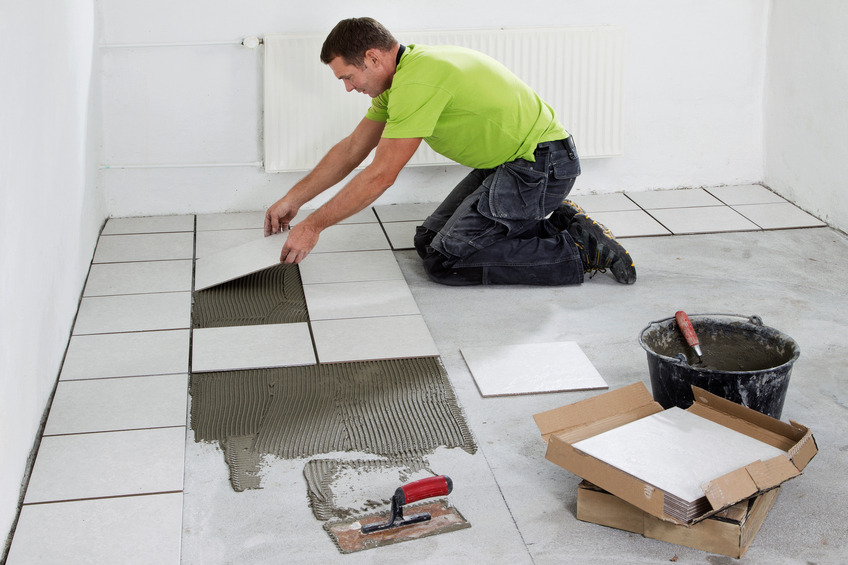Discover the Tricks to Perfect Ceramic Tile Installment Whenever
Mastering the art of floor tile installation entails a collection of accurate steps and methods that, when implemented correctly, can result in a polished and smooth finish. By recognizing the secrets behind each action, you can guarantee that your floor tile installation not only satisfies yet exceeds your assumptions.
Proper Surface Prep Work
Reliable tile setup hinges dramatically on precise surface area preparation to make sure a remarkable end result. The surface has to be tidy, dry, and structurally sound to avoid future problems such as loosened floor tiles or broken grout.
To ensure appropriate bond, it is suggested to rough up smooth surface areas via sanding or scarifying. In addition, using a primer can improve bonding between the substrate and the ceramic tile adhesive. Unequal surfaces ought to be leveled using a self-leveling substance to stop lippage and make sure a smooth surface.
Additionally, inspecting for potential sources of wetness is important, as excess moisture can result in mold and mildew growth and damages the floor tiles gradually. Using a moisture barrier or waterproofing membrane in wet areas like kitchen areas or restrooms is vital to secure the ceramic tiles from water damage. By carefully preparing the surface area prior to ceramic tile installation, one can develop a visually enticing and resilient tiled area that will certainly stand the test of time.

Picking the Right Adhesive
Selecting the appropriate adhesive is a vital step in ensuring the effective setup of tiles. The sort of adhesive you select will certainly depend upon numerous aspects such as the kind of ceramic tile, the substratum material, and the area of the setup. There are various sorts of adhesives offered on the market, consisting of thin-set mortar, mastic, and epoxy.

Epoxy adhesives are very resilient and waterproof, making them suitable for areas vulnerable to moisture such as kitchen areas or bathrooms. They are likewise ideal for mounting glass or steel ceramic tiles. When selecting a sticky, ensure to comply with the manufacturer's referrals and think about the specific demands of your floor tile installation job.
Precision Reducing Methods
One of the most typical devices made use of for precision cutting in tile installation is the tile cutter. Tile cutters come in different kinds, including hands-on tile cutters, electric wet saws, and handheld tile cutters. Manual ceramic tile cutters are ideal for straight cuts on ceramic and porcelain ceramic tiles, providing accurate and tidy sides.
Additionally, making use of devices like floor tile scribes or glass cutters can help in racking up and snapping tiles with precision. By grasping these precision cutting methods, tile installers can guarantee a specialist surface and an aesthetically attractive result in their ceramic tile tasks.

Cement Application Tips
When transitioning from precision reducing techniques to grout application in floor tile setup, interest to other detail and technique is critical for achieving a remarkable coating. Cement serves not just as a useful component that loads the voids in between ceramic tiles but likewise plays a considerable function in the overall visual of the setup. To make sure an effective grout application, start by picking the proper type and shade of grout that complements the floor tiles. Mix the grout according to the supplier's guidelines, ensuring a lump-free and smooth uniformity.
When using cement, work in little areas at once to stop it from drying out as well swiftly. Use a rubber float to push the cement into the joints at a 45-degree angle, making sure full protection and condensing the product. Once the cement is applied, use a wet sponge to cleanse the floor tiles, seeing to it not to get rid of cement from the joints. Buff the tiles with a completely dry fabric to eliminate any kind of haze and attain a polished finish. Adhering to these cement application suggestions will cause a properly installed ceramic tile surface that improves the elegance of any area.
Finishing Touches and Upkeep
To complete the floor tile installment task successfully, focus to detail during the completing touches and routine maintenance is essential. visit this site right here After the cement has actually dried out and the floor tiles are securely in place, the final actions involve guaranteeing that all edges are correctly secured.
Routine maintenance is key to preserving the elegance and performance of your tiled surfaces. A straightforward regimen of sweeping or vacuuming followed by wiping with a gentle cleanser can help keep your ceramic tiles looking beautiful (tile installation austin). For locations that are frequently exposed to dampness, such as cooking areas or bathrooms, routine resealing of cement lines is suggested to stop mold and mold growth
Conclusion
Finally, accomplishing perfect ceramic tile installation each time calls for focus to detail and appropriate methods. By concentrating on surface preparation, selecting the appropriate adhesive, using accuracy reducing methods, applying cement meticulously, and completing with focus to detail, you can make sure a professional-looking outcome. Remember to adhere to these steps and maintain your ceramic tiles routinely to prolong their life expectancy and maintain them looking their finest.
One of the most typical tools utilized for accuracy cutting in floor tile installation is the ceramic tile cutter. Floor tile cutters come in different kinds, including hands-on tile cutters, electric wet saws, and handheld tile cutters. Hand-operated tile cutters are suitable for straight cuts on ceramic and porcelain ceramic tiles, supplying accurate and tidy edges. Furthermore, using devices like floor tile scribes or glass cutters can assist in racking up and snapping floor tiles with precision. By grasping these precision cutting strategies, floor tile installers can ensure a specialist coating and an aesthetically he said appealing outcome in their tile tasks.
Comments on “Your Trusted Partner for Tile Installation Austin and Beyond”